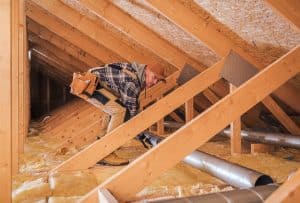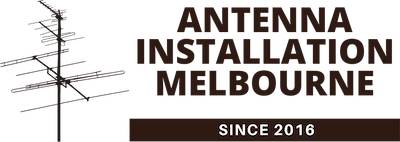Attic Or Roof Antenna Installation Guide
Guide that provides some hints and tips about installing an antenna in an attic or loft roof space we set out some of the key points to follow and avoid.
While radio antennas will always perform better when they are located outside, sometimes it is more convenient for a variety of reasons to use an antenna located in the attic or roof space within the house.
there are many reasons for wanting to locate an antenna in a roof space or attic and sometimes the convenience and ease of installation make the drop in performance of installing an antenna in the attic.
Advantages of installing an antenna in an attic
Although there are several disadvantages of installing a radio antenna in the roof space, there are also some advantages:
Ease of installation: It is normally very much easier to install a radio antenna in the attic or roof space than outside. There is no need to climb up ladders, and possibly onto the roof with all the hazards for untrained people not used to climbing up ladders and handling them whilst up there. For anyone who does not like heights, this is a great advantage
Access for feeders: All radio antennas need a radio feeder to transfer the energy to and from the antenna. Coaxial cable or coax os the most common form of feeder. When installing an antenna in the roof space or attic, it is possibly much easier, dependent upon the actual layout, to route feeders into the attic.
- Protection from the elements: Radio antennas that are located externally are subject to the rigours of the weather. Even in what may be thought of as reasonably protected areas, the weather can still play havoc. Wind, rain, and pollution all cause the antenna to deteriorate over time. Even the coax feeder will deteriorate quite quickly. Water entering the end of the feeder will seep along the feeder causing corrosion and the water in the dielectric will considerably increase the loss. Keeping the radio antenna and the coax cable inside will mean that it will last much longer.
- Visual impact: Antennas located outside can be unsightly. Locating them inside removes the visual impact. In some areas, external antennas are not allowed, so antennas located in the roof space are needed.
- Attic antenna installation precautions
When locating an antenna in the attic or roof space, there are several precautions that can be implemented to ensure that the performance that is gained is the best for the circumstances.
Remember the additional attenuation: When installing an antenna in an attic or roof space it should be remembered that there will be a wall or tiles between the antenna and the outside. These will add additional attenuation, and this will increase with frequency. It is often difficult to assess the actual amount of attenuation, but it may mean that an antenna with a larger gain is required, or possibly a pre-amplifier may be needed.
It should also be remembered that the level of attenuation will increase when the roof tiles are wet, and worse still if they become covered with snow. This could result in the loss of reception for a TV signal.
Keep away from internal wiring: There is often internal wiring within the attic or roof space. Make sure that the antenna is as far away from these as possible so that they do not affect the performance.
Avoid placing antenna so that signal passes through objects in the attic: For directional antennas – the most common type of antenna for TV installations, it is necessary to
Keep away from sources of interference: There can be sources of interference in the attic. Even wiring can carry interference from elsewhere in the house, so try to keep the antenna as far away from this as possible. Fluorescent lights can be a source of considerable interference, so remember to keep the antenna as far away as possible from these, and not orientated so the antenna is directed towards one.
Remember wiring and objects from the floor below: When installing an attic antenna, it is very easy to forget the wiring for the rooms below. This wiring will typically not be so obvious and can easily be forgotten, but it can give rise to interference and may affect the antenna in other ways.
Whilst the performance of antennas located outside will almost always be better, locating them inside and in a roof space may be the only option. When undertaking an installation inside the roof space, following a few guidelines can ensure the best performance is obtained.

